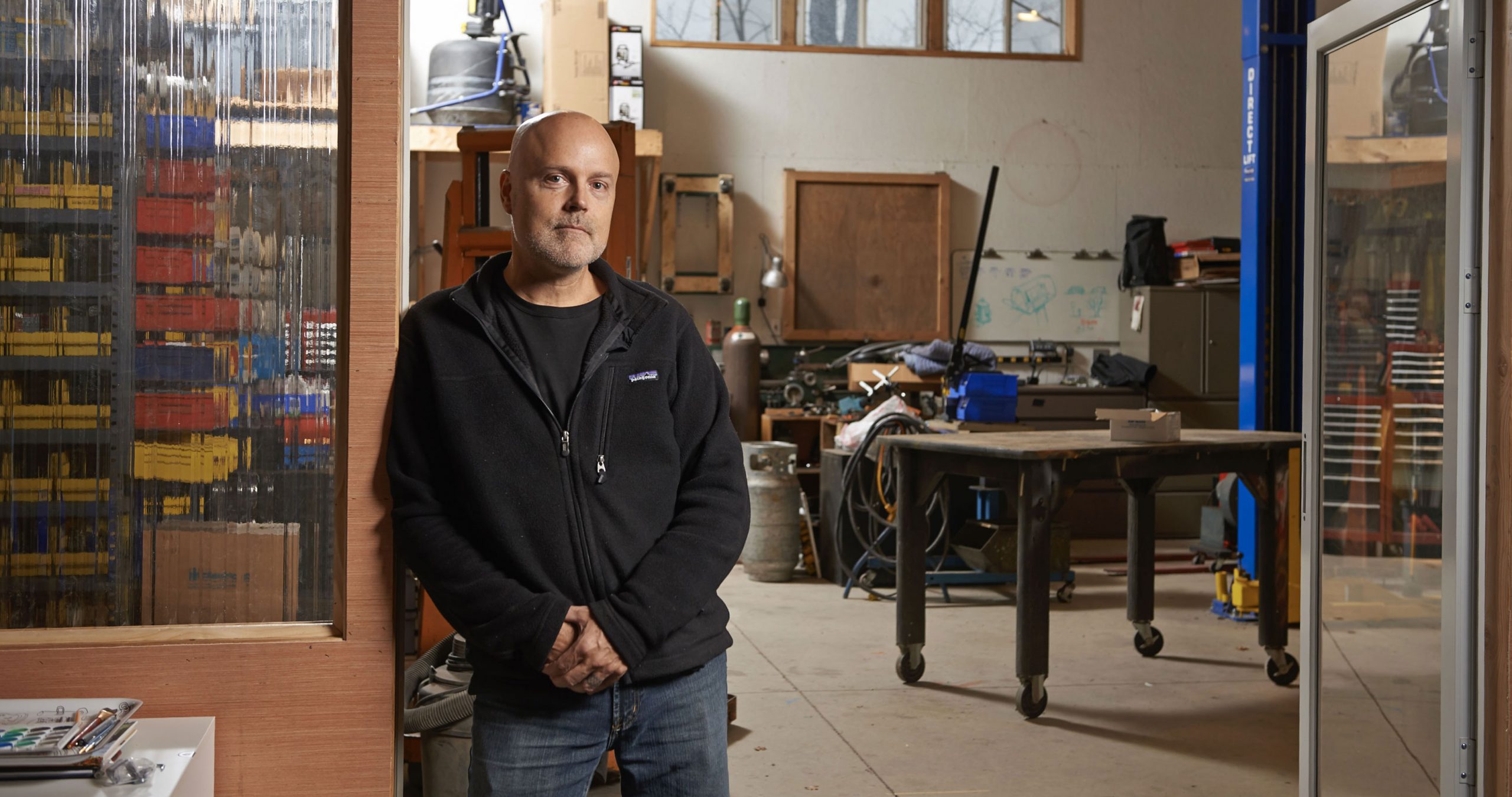Copyright © 2025 Motivate Media Group. All rights reserved.
Work from home: Brian Alexander shares lessons learnt since 1998
Having worked from home since 1998, Brian Alexander shares lessons for anyone struggling to work in isolation

Office furniture brand Herman Miller has teamed up leading designers and architects to create an interview series with a focus on self-isolation and working from home, exclusively published in the Middle East by Identity. From tips on productivity to creative processes and what to expect of the future, these designers share their current realities under lockdown.
In its second edition of the series, industrial designer Brian Alexander, who is a thoughtful observer of human behaviour and someone who been working from home since 1998 – the year he founded his studio – shares tips on how to make the best out of the experience.
His natural inclination to watch, hypothesize, test, and reassess has led him to iterate on his own work-from-home patterns and places over the years. His thoughts on how to maintain creative flow and collaborate while working from home hold lessons for anyone struggling to work in isolation.
Here are Brian Alexander’s tips on working from home:
Start with Stillness
Objectively do an internal inventory of your work-life up to this moment. The point of this is not to make a to-do list, but to get your bearings and center yourself. It’s up to each of us to sort our own paths. But we can’t do that if we don’t know our own triggers or have a general portrait of our work lives.
Practice Contextual Displacement
For many, home is the “off” button for work. You are surrounded by all the objects and cues which represent downtime or other activities which normally counter work life. A general sense of fatigue and frustration builds because the experiential cues of home haunt you. It’s a little like mixing complementary colours. If you maintain some separation it can be a powerful addition. If you mix too much, everything goes grey.
Designate a Workspace
If you already had a home office, you’re good to go. If not, designate one. However minimal or grand, lay claim to a spot in which you feel you can do your best work. Maintain that location for that purpose. When you leave that location, you are no longer at work. Don’t underestimate the power of closing a door or throwing a sheet over your desk to suddenly feel at home again.
Reference Existing Patterns
Whatever your previous work experience was, try adopting the associated behaviours and routines from being at the office. For many, the start of the day is more critical than the end. Wake up at a consistent time. Follow the same pattern you usually do to prepare for work, but introduce a few new minor variations. Make some coffee, walk around the block, come back, go to your work spot, and proceed with your day. These patterns can function as primers to get you in the frame of mind most beneficial to work.
Mind Your Relationships
Years ago, you probably had a shot of your family vacation pinned up in your cubicle. Now the same imagery is your wallpaper or desktop background. When you close an app or start a meeting, there’s a little bit of you-ness exposed at that moment. We appreciate that as fellow humans. So stay connected in whatever form you can.
Photo: Brian Alexander
The Latest
How Eywa’s design execution is both challenging and exceptional
Mihir Sanganee, Chief Strategy Officer and Co-Founder at Designsmith shares the journey behind shaping the interior fitout of this regenerative design project
Design Take: MEI by 4SPACE
Where heritage meets modern design.
The Choreographer of Letters
Taking place at the Bassam Freiha Art Foundation until 25 January 2026, this landmark exhibition features Nja Mahdaoui, one of the most influential figures in Arab modern art
A Home Away from Home
This home, designed by Blush International at the Atlantis The Royal Residences, perfectly balances practicality and beauty
Design Take: China Tang Dubai
Heritage aesthetics redefined through scale, texture, and vision.
Dubai Design Week: A Retrospective
The identity team were actively involved in Dubai Design Week and Downtown Design, capturing collaborations and taking part in key dialogues with the industry. Here’s an overview.
Highlights of Cairo Design Week 2025
Art, architecture, and culture shaped up this year's Cairo Design Week.
A Modern Haven
Sophie Paterson Interiors brings a refined, contemporary sensibility to a family home in Oman, blending soft luxury with subtle nods to local heritage
Past Reveals Future
Maison&Objet Paris returns from 15 to 19 January 2026 under the banner of excellence and savoir-faire
Sensory Design
Designed by Wangan Studio, this avant-garde space, dedicated to care, feels like a contemporary art gallery
Winner’s Panel with IF Hub
identity gathered for a conversation on 'The Art of Design - Curation and Storytelling'.
Building Spaces That Endure
identity hosted a panel in collaboration with GROHE.
















